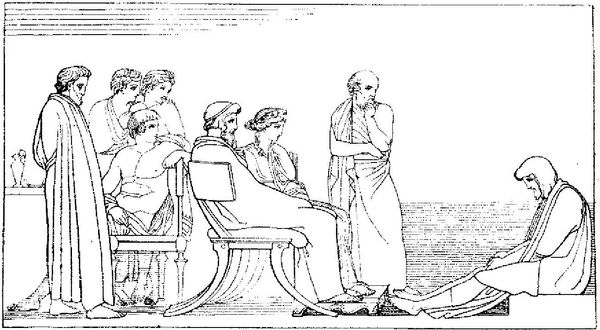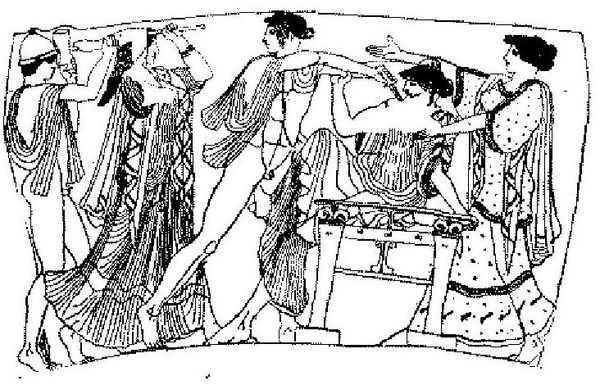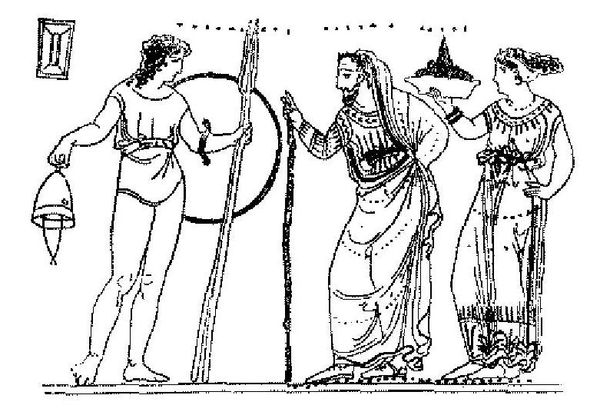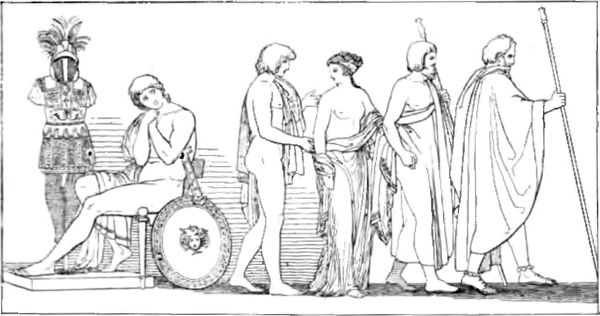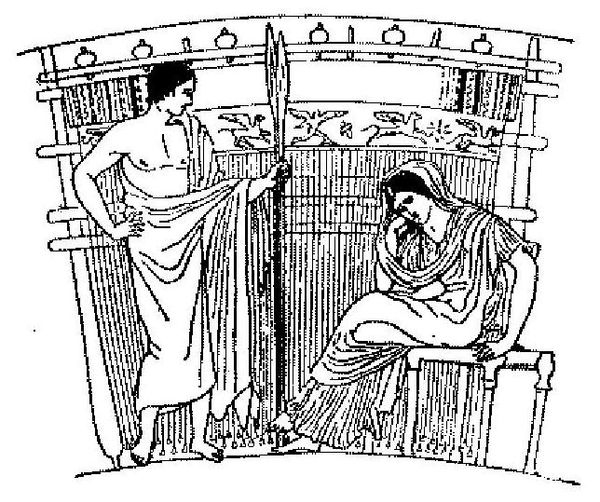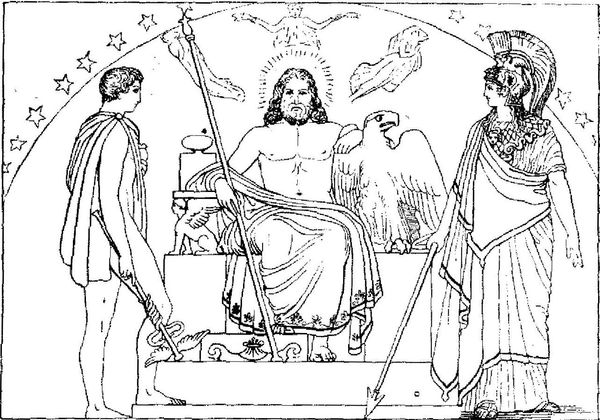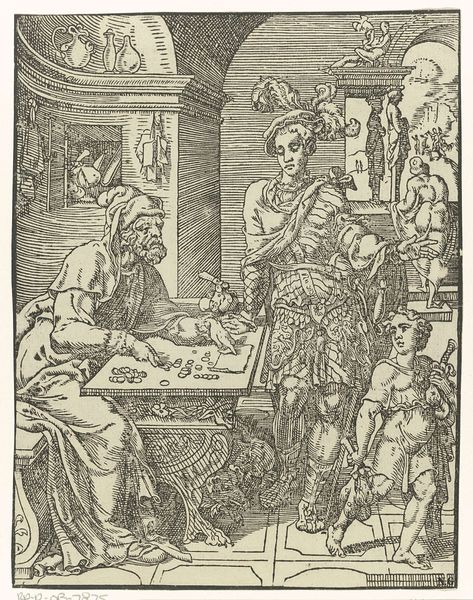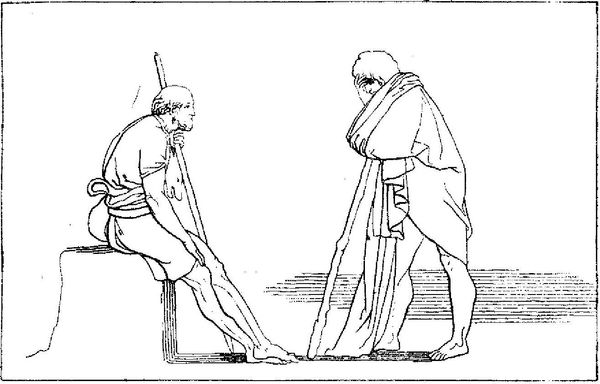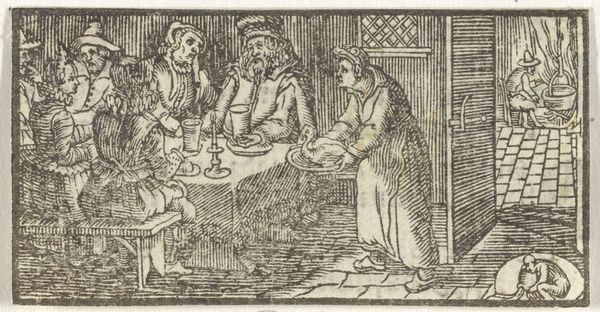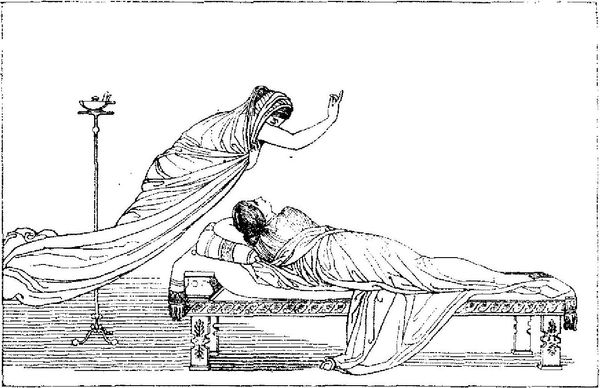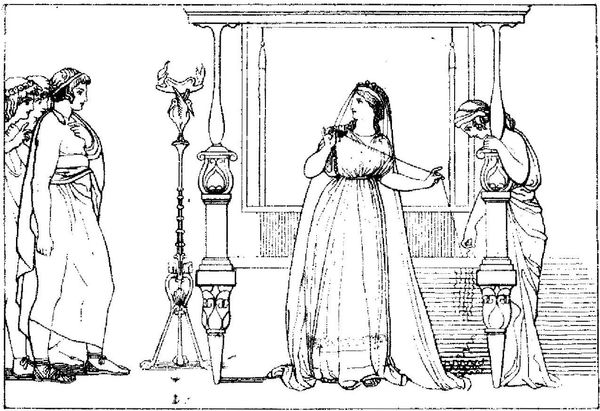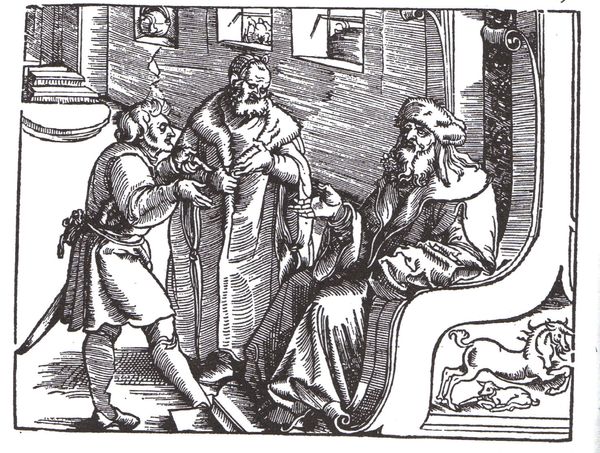
drawing, paper, ink
#
drawing
#
comic strip sketch
#
neoclassicism
#
mechanical pen drawing
#
pen illustration
#
line drawing illustration
#
classical-realism
#
figuration
#
paper
#
line art
#
ink line art
#
linework heavy
#
ink
#
thin linework
#
human
#
line
#
history-painting
#
storyboard and sketchbook work
#
technical line art
Copyright: Public domain
Curator: Immediately, I see such clarity of line. It's stark and emotionally reserved, yet somehow still communicative. Editor: Precisely! This is "Illustration to Odyssey," created in 1793 by John Flaxman. The medium is ink on paper. Flaxman's illustrative series for Homer's "Odyssey" captures a crucial moment in the narrative's cultural lifespan. Curator: The minimal rendering definitely emphasizes universal themes, doesn’t it? The women feel almost archetypal, passively bearing witness to the brooding figure seated opposite. One appears to be taking notes. Is it about knowledge production here and women acting in a certain way in society at that time? Editor: We can't overlook the pervasive influence of Neoclassicism. Think of how ideas around the noble savage impacted the style's reception. Flaxman, immersed in Enlightenment thought, offers a lens through which to scrutinize power dynamics. While his work visually leans towards simplicity, its subject positions women on the margins, perpetuating existing hegemonies even as it presents them. Curator: Right, I was thinking, are the women literally framing his pain and suffering with that tableau, like shaping the narrative of a man, the figure on the chair who seems to be suffering? What's that emotional labor implying when positioned within the conventions of the era? Is Flaxman aware? Editor: I am quite convinced he is, because he also puts these illustrations out into the public, to gain an audience and change how the history is perceived. Flaxman engaged with an emerging visual culture and expanding market for prints. His work, circulating through these channels, democratized access to classical narratives but also served to validate prevailing ideologies. These images reinforce power structures. The suffering figure becomes the center around which everyone else revolves. The lines are economical but carefully chosen. This creates and bolsters his visual legacy and position within society. Curator: It becomes a closed loop of validation, doesn't it? Very incisive and visually articulate in its presentation. Thanks, that gives a lot of perspective for analyzing its narrative of control and marginalization. Editor: And in turn, by considering it through the market, perhaps we avoid merely lionizing another canonical figure. It encourages a deeper questioning of image making and consumption throughout our cultural history.
Comments
No comments
Be the first to comment and join the conversation on the ultimate creative platform.
